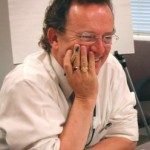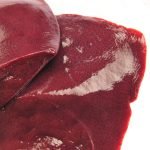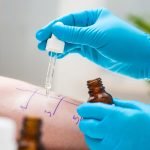Naturopathic Medicine as Application
David J. Schleich, PhD
Education
What We Don’t Want to Happen
Two terms from the computer industry, the “app” and the “backplane,” are handy concepts to use when drilling down into the threat to our decades-long efforts to ramp up naturopathic medical education. We want our degree to be the platform from which our grads launch into professional practice. That strategy has had 2 particular, interdependent imperatives: 1) to accredit our programs and institutions within the mainstream higher education terrain; and 2) to continuously expand licensing. As we move along, though, there is an accompanying drift to a more allopathic continuum of content and practice which has at the same time been worrying elders in the profession and disappointing newcomers. How much of this drift is inevitable? How much is necessary? How much is mere application within the larger backplane of orthodox medicine?
An “app,” as even old boomers know, is software dedicated to a specific task. Whatever the “app,” it runs inside an operating system. Some are single task; others, known as “integrated software,” can involve several applications all running simultaneously. Sometimes apps run on mobile devices; sometimes they run on desktops. The “backplane” of a computer is a kind of circuit board which has all kinds of elements: pci slots, usb connectors, ethernet connectors, headers, chipsets, memory slots, bridges, and power sources. All these and more components talk to each other in omnibus fashion, using parallel and bit serial connections to make up a complete computer system. Backplanes aren’t motherboards, because they don’t include on-board processing.
With these definitions in mind, may I suggest that in the design and delivery of naturopathic medical education, we are at risk of defaulting to becoming an “application in the allopathic backplane” rather than a profession with its own demarcated, codified knowledge and civil identity – that is, having its own “backplane.” A manifestation of what this metaphor translates into is the worrying question, “where does a naturopathic standard of care exist in third-party reimbursement and in public health policy?”
The Biomedicine Backplane
A pervasive symptom of this threat is the proliferation of the “integrative medicine program” and its corresponding “integrative medicine clinic.” These developments are alongside the wholesale mixing and merging of content, learning outcomes, techniques, jargon, and clinical definitions among natural medicine, naturopathic medicine, and holistic medicine terminology, practices, and certifications. The collective lot is spinning out there in the healthcare landscape, kicking up local and even national skirmishes and eddies, invasive siroccos, and regional tsunamis. Because we have to hold our ground amid the fuss, confusion, and rush of services, territories, branding, and claims, understanding why and how this is occurring is vital to knowing how best to prepare our doctors for clinical practice. As we move more and more confidently into that arena (5 more states with licensing, registration, or certification within the last decade alone), it’s the backplane of biomedicine we need to pay attention to most, to keep our footing. That is, we process our activity [our app] increasingly through a device we do not control. The more we understand the biomedicine backplane, the more we avoid becoming just another app.
The allopathic profession and its supportive industries have in recent years noticed the commercial and clinical value in what we do [notwithstanding our having been formally doing what we do under duress from these same interests, for over 12 decades in North America]. In keeping with the familiar practice which sees dominant orthodox groups knocking off or assimilating the front-edge products of competitors, the allopathic paradigm is corralling many of our modalities through the backplane of their powerful systems and through the turnstiles they rigidly control.
In his remarkable boomer book, The Making of a Counterculture, Theodore Roszak warned us about such assimilations, as did his contemporaries, Herbert Marcuse, Norman Brown, Alan Watts, Paul Goodman, and others. The “trick,” they said back then, was to “clue in” when the dominant culture persuaded you by various means that your own efforts were really part of the mainstream, after all. Or, seen from another angle, and as Voltaire put it even a few centuries before that, “Our species is so made that those who walk on the well-trodden path always throw stones at those who are showing a new road.” (Voltaire, Philosophical Dictionary, 1924) He also advises us at the end of Candide (1991), in the part where he ignores Pangloss’ insistence that everything has turned out for the best and that we must, in the end, “cultiver notre propre jardin” (just cultivate our own garden). In a healthcare terrain where “it is dangerous to be right in matters on which the established authorities are wrong,” (Voltaire, Philosophical Dictionary, 1924), it is very difficult to stick to our own garden when not only the marketplace cannot differentiate one garden from another, but when we are also having trouble doing the same.
Sticking to Garden Fundamentals
Sticking to our own garden fundamentals can help us keep out of the biomedicine backplane. There are numerous principles in the naturopathic medicine garden that are not inherent in allopathic medicine’s continuing incursions, and which we risk losing. These principles are already embedded throughout the 4 years of naturopathic medical school and subsequent residency and continuing medical education. Allopathic schools and clinical settings are talking more about these lately, presumptuously, concomitantly, and largely unaware that naturopathic medicine has held these spaces, often under siege, for many decades. I know that’s a lot of adverbs to contend with in one sentence; however, such is the urgency of our circumstances.
- Naturopathic medicine has long affirmed the primacy of the relationship between the doctor and the patient.
- Naturopathic medicine focuses on the whole person and not exclusively on his or her pathology or presenting condition.
- Naturopathic medicine is informed by evidence, the diagnostic skills, and the cumulative experience of the doctor.
- Naturopathic medicine makes use of every natural, therapeutic approach possible.
- Biomedicine has not coexisted respectfully with naturopathic medicine, ever, in the North American landscape.
- Naturopathic medicine has always encompassed the biological, psychological, social, and spiritual dimensions of human health and illness.
- Naturopathic medicine has always emphasized the importance of the “vis,” the body’s innate capacity for healing.
What is occurring more broadly these days is that such principles conjugate through the backplane of the allopathic establishment so frequently that they become assimilated. As Roszak pointed out 50 years ago, the mainstream orthodox professions will repeat messages to the extent that the assimilation of ideas, concepts, and values is accomplished and is eventually irretrievable as a counter-culture activity by those who had been nurturing them previously.
A further indicator of the convergence in the allopathic backplane of heretofore natural medicine and naturopathic medicine services and products is the continuing move to access and use what had been previously eschewed from our sector by the allopathic latecomer. About 5 years ago, for example, the NIH’s National Health Interview Survey (NHIS) Key Findings report on so-called “complementary health approaches” is very telling in this regard (NCCIH, 2012). Specifically, for more than a decade, one-third of US adults had been using complementary healthcare approaches, along with an average of 12% of US children, ages 4-17, in the same period. Many naturopathic doctors agree that the data are remarkable across many reporting dimensions. Not surprisingly, the NHIS report revealed that US adults were more likely to choose these complementary approaches (some 59 million of them) for preventive and overall wellness purposes than for treating specific conditions. These same adults were attracted to fish oil, probiotics, and prebiotics. They were drawn to mind-body approaches for therapeutic and overall wellness purposes. In this sizeable market shift in the last 2 decades, as reported in the NHIS, naturopathic doctors recognize that out-of-pocket spending on products and visits to complementary practitioners is growing, notwithstanding the prevalence of partial insurance reimbursements.
A Close Eye on Professional Formation
To prevent being conjugated as a profession through the assumptions and circuits of the allopathic backplane, then, we need to pay close attention to what professional formation entails at the end of the second decade of this new century, when the necessity of accelerating our efforts has never been greater. The complexity of professional formation lies in its dual imperatives. A group self-identifies within a demarcated body of knowledge and skills, and, at the same time as its members prepare to conduct lives of service and value to the community precisely because of those skills – and in competition with those who might have similar resources to offer civil society – its members must carve out a moral and political development pathway for those eligible. (Boon, 1996; Biggs, 1989; Fox, 1989; Bucher, 1988; Gort, 1986; Freidson, 1985, 1984, 1970) The goal of professional formation is to anchor members of such groups within prescribed requirements for entry and to equip them to navigate an inevitable landscape of competition. Eventually, such groups achieve what scholars call “social closure,” a term describing civil society’s acceptance of the defined roles and privileges of the group. Thus, the emphasis on state authority for the privileges accorded the “formed” group to protect its members from those who have not followed a similar foundational path.
Another variable in professional formation is the attention scholars give to the educational frameworks of emerging professions. Their attention is rooted, as suggested above, in the wish to describe those often- institutionalized training arrangements as part of a larger understanding of how those groups take their place in civil society. The development of the naturopathic profession’s medical education institutions has been inextricably bound up, then, with the professional formation of naturopathic doctors in this and a number of other ways, and by its quest to have one secure footprint in the nonprofit sector and another in the higher education world.
Inside these footprints, every established accredited naturopathic college or program within an institution of higher education in North America has found a niche just outside but parallel to the academic mainstream. That niche is also occupied by self-interested professional naturopathic associations and groups who, just as the educational institutions which formed the foundation of their growth were finding their way, had been equally busy trying to establish themselves as a profession. It is in this complex interplay among the naturopathic medical practitioner, the emerging naturopathic medical academic, and the associations charged with scouting the terrain of professional formation and mapping a successful route across it, that we find our greatest opportunities and our greatest challenges.
The Layers of the Professional Formation Onion
Like layers of a fascinating, huge onion, these 2 footprints – the nonprofit sector and the higher education world – exist within a rich history of medical pluralism in North America, particularly in the United States. In this connection, medical historians, medical anthropologists, and social scientists have written frequently about professional formation of mainstream groups such as medical doctors, lawyers, and nurses, but much less about the alternative and complementary treatment modalities and therapies of such professions. As a result, we have fewer maps through this multi-layered landscape. (Roth, 1974; Maretzki & Seidler, 1985; Baer, 2001; Boon, 1996)
This uneven attention has resulted as much from the small numbers in professions such as naturopathic medicine as it has from the so-called marginalization within regulated state or provincial frameworks of those professions in North America (Wardwell, 1951; Roth, 1974). The biomedicine monopoly has emerged most dramatically since Abraham Flexner’s report (1910) on medical education in which he emphasized the primacy of competency in basic sciences. However, the economic dominance of what Lust called in the early days “the Medical Trust” was an inherent motivator in the forming of western medicine as the dominant and orthodox system of medicine, especially in the United States. According to an early president of the Institute of Homeopathy, since the beginning decades of the 20th century, there has been an effort to thwart the professional formation of naturopathic doctors in the form of an “assault on traditional medicine” by the American Medical Association, long “bent on throttling everything which stands in its way for obtaining medical supremacy” (Wilcox, JAOA, 1914, p.650).
The allopathic and the naturopathic doctor each looks, touches, and listens. Each has lab tests and instruments to do the work of physical and clinical diagnosis. Indeed, these similarities have been true from the days of Frederick Gates and William Osler, who anticipated a time when all medicine – natural or scientific – could be “reduced to an exact science” (Bliss, 1999). Osler made it clear in The Principles and Practice of Medicine (1897), though, that the rigor which must accompany scientific medicine was frequently not present in the fields of naturopathy, homeopathy, and osteopathy.
Osler knew that “medicine must rest on science” (Bliss, 1999); ie, he wanted a scientific underpinning to “working at the bedside.” Osler as a clinical physician focused on the “whole patient,” not unlike the naturopathic physician who is trained to develop a relationship with the patient that includes a comprehensive awareness of the person’s complete physical, spiritual, and mental makeup. Boon (1996) and Gort (1988) before her have identified the contemporary manifestations of this tension between holistic and scientific practitioners, and, indeed, between holistic and scientific naturopathic practitioners. The holistic practitioner’s spiritual and physical words are “not separate, but manifestations of a single life force” (Boon, 1996). Consequently, symptoms – whether physical or spiritual – command the same attention. Their scientific counterparts, however, practice based on a biomedical model, which reduces all pathology to a cellular or molecular level. For physical symptoms, the scientific method is the route to curing a disease. For addressing the spiritual, environment and spiritual balance are key factors in a treatment protocol. These same allopathic professionals now wish to relegate naturopathic medicine to an application within their larger rubric.
As Schon reports (1987, 1995), “the greater one’s proximity to basic science, the higher one’s academic status.” Professional schools of medicine, in such a context, would strive to train healers and socialize them as biotechnical problem solvers. Routinely, they would follow a sequence that immersed the student in medical science and then in supervised clinical practice. Glazer (1974) describes this approach as a “yearning for the rigor of science-based knowledge and the power of science-based technique.” This fascinating polarity hugely influenced the development of naturopathic medical education in Canada. The existence of a distinct tension between professional orientation [itself not consistent across the profession and often regionally diverse] and student socialization has been discussed from a somewhat different perspective by Boon (1996) in her analysis of the scientific and holistic world views of both students and practitioners.
Gieryn’s (1983) viewpoints regarding the practical problem of constructing some kind of boundary between science and “varieties of non-science” represents an important theoretical discussion about the claims to authority that science insists upon and also upon which mainstream allopathic medicine pretends to assimilate, without consequence, so many naturopathic practices and principles. Naturopathic physicians and their teachers seem attracted to such a source of authority, but define their eclectic professional therapies inside and outside such boundaries. There are, as we know, continuing claims that the profession has not embarked on rigorous research in key modality areas in its repertoire, such as individualized nutritional therapy (Vickers & Zollman, 1999) or chronic diseases, in general (Haynes, 1999). A persistent equivocation in the broader field of clinical practice, and the continuing influence of practitioners on their educational institution’s priorities, have influenced the development of the profession and those same educational institutions.
The Persistent, Perplexing Problem of Identity
A dimension of the problem is a persistent confusion among the public, elected officials, government policymakers, other professional healthcare providers, higher education administrators, academics, and ministry officials about what naturopathy and naturopathic medicine actually are. Indeed, there is no current, modern, and comprehensive textbook of naturopathic medicine which adequately assembles a synthesis and critical evaluation of the emerging constructs, clinical models, and scientific foundations of contemporary naturopathic philosophy and clinical theory. Lindlahr’s The Philosophy of Natural Therapeutics (1975) is considered by some as the earliest reliable reference in this regard. However, as Snyder pointed out in 1996, “since Lindlahr there has been no textbook updating the underlying theory of naturopathic medicine, and no comprehensive guide to clinical practice and case analysis based on theory referenced to current research” (1996, p.12). Within Pizzorno and Murray’s 1987 Textbook of Natural Medicine – a compendium of natural treatments for specific conditions referenced to research literature – there are 2 brief chapters on history and philosophy and naturopathic clinical theory.
The analytical tools and definitions of naturopathic medicine from Dower, Hough, and O’Neil, in their Arkay Foundation report, Profiling the Professions: A Model for Evaluating Emerging Health Professions (September 2001), out of the University of California’s Center for the Health Professions, are particularly useful in their breadth, inclusiveness, and utility. The categories of definition encompassed in that work take into account the major aspects of institutional development that concern us here. For example, the categories include, at the very least, government regulation and private sector recognition, the education and training of naturopathic doctors, and a model for evaluation (Dower et al, 2001). Moreover, the comprehensive nature of the descriptions and definitions considers all those practitioners, regulated and otherwise, who find value in naturopathic modalities and therapies. The resulting breadth and objectivity are most helpful in sorting out the conflicting claims of philosophical, medical, and even political positions taken by competing groups within the CAM community, and more recently by the allopathic community itself.
Back to Our Roots
Benedict Lust, himself, in a 1902 editorial in The Naturopathic and Herald of Health – a century and a decade before the very idea of apps and backplanes was part of our culture – explained that naturopathy was “purposely a hybrid word.” Alluding to the therapeutic practices of nature-cure doctors, homeopaths, and other healthcare practitioners such as Connaro (nutrition and fasting), Priessnitz (hydrotherapy), Woerishofen (the Kneipp Cure), Kuhne (serotherapy), Macfadden (Physical Culture), Willmans (Mental Culture) and finally A.T. Still (osteopathy), Lust proclaimed a “new medicine” whose scope would encompass every “life-phase of the id, the embryo, the fetus, the birth, the babe, the child, the youth, the man, the lover, the husband, the father, the patriarch, the soul.” (Lust, 1902, p.4) Lust had been especially interested in the hydrotherapy principles and practice of Sebastian Kneipp. However, Lust called his new and eclectic naturopathy the “medicine of the future.” Had he known about apps and allopathic backplane, he would not have wanted this new medicine to be affected by either. He would, though, have had a very powerful computer generating a robust literature defining and proclaiming that the medicine of the future had indeed arrived as planned.
Refs:
Arouet, F. M. (Voltaire). (1924). The Philosophical Dictionary. Selected and translated by H.I. Woolf. New York, NY: Knopf.
Arouet, F. M. (Voltaire). (1991). Candide. Mineoloa, NY: Dover Publications Inc.
Baer, H. A. (2001). Biomedicine and Alternative Healing Systems in America: Issues of Class, Race, Ethnicity, and Gender. Madison, WI: University of Wisconsin Press.
Biggs, C. L. (1989). No Bones About Chiropractic? The Quest for Legitimacy by the Ontario Chiropractic Profession, 1895-1995. PhD dissertation, University of Toronto.
Bliss, M. (1999). William Osler: A Life in Medicine. Toronto, Ontario: University of Toronto Press.
Boon, H. (1996). The Future of Naturopathic Medical Education. Primary Care Integrative Natural Medicine: The Healing Power of Nature. Doctoral dissertation. Graduate Department of Pharmacy, University of Toronto.
Bucher, R. (1988). On the natural history of health care occupations. Work and Occupations, 15(2): 131-147.
Dower, C., O’Neil, E. H., & Hough, H. J. (September, 2001). Profiling the Professions: A Model for Evaluating Emerging Health Professions. Center for the Health Professions. University of California, San Francisco, CA. Available at: https://nasemso.org/EMSEducationImplementationPlanning/documents/Model2.pdf. Accessed April 15, 2017.
Flexner, A. (1910). Medical Education in the United States and Canada: A Report to the Carnegie Foundation for the Advancement of Teaching. New York, NY: Arno Press & The New York Times; last reproduced in 1972.
Fox, R. C. (1989). Chapter 3: The education, training and socialization of physicians: medical school. In: The Sociology of Medicine. Englewood Cliffs, NJ: Prentice Hall Publisher.
Freidson, E. (1970). Profession of Medicine: A Study of the Sociology of Applied Knowledge. New York, NY: Dodd, Mead & Co.
Freidson, E. (1970). Professional Dominance: The Social Structure of Medical Care. New York, NY: Atherton Press.
Freidson, E. (1984). The changing nature of professional control. Annual Review of Sociology, 10: 1-20.
Freidson, E. (1985). The reorganization of the medical profession. Medical Care Review, 42(1): 11-35.
Gieryn, T. F. (1983). Boundary-work and the demarcation of science from non-science: strains and interests in professional ideologies of scientists. American Sociological Review, 48: 781-795.
Gort, E. (1986). A Social History of Naturopathy in Ontario: The Formation of an Occupation. MSc Thesis, Division of Community Health, University of Toronto.
Haynes, R. B. (1999). Commentary: a warning to complementary practitioners: get empirical or else. BMJ, 319(7225): 1632.
Lindlahr, H. (1975). Philosophy of Natural Therapeutics. Edited and revised by Jocelyn Proby. Essex, UK: CW Daniel Company Ltd.
Lust, B. (1902). A happy new year. The Naturopathic and Herald of Health, III(1), 13-14.
Maretzki, T. W. & Seidler, E. (1985). Biomedicine and naturopathic healing in West Germany: a historical and ethnomedical view of a stormy relation. Culture, Medicine and Psychiatry, 9(4): 383-421.
National Center for Complementary and Integrative Health. What Complementary and Integrative Approaches Do Americans Use?: Key Findings from the 2012 National Health Interview Survey. Last modified June 22, 2016. NCCIH Web site. https://nccih.nih.gov/research/statistics/NHIS/2012/key-findings. Accessed April 15, 2017.
Osler, W. (1897). The Principles and Practice of Medicine. New York, NY: D Appleton & Co.
Pizzorno, J. E. & Murray, M. T. (1987). A Textbook of Natural Medicine. Seattle, WA: John Bastyr College Publications.
Roth, J. A. (1974). Professionalism: the sociologist’s decoy. Sociology of Work and Occupations, 1(1): 6-23.
Roth, J. (1976). Health Purifiers and Their Enemies: A Study of the Natural Health Movement in the United States with a Comparison to its Counterpart in Germany. New York, NY: Prodist.
Schon, D. (1987). Educating the Reflective Practitioner. San Francisco, CA: Jossey-Bass Publishers.
Schon, D. A. (1995). Knowing-in-Action: The New Scholarship Requires a New Epistemology. Change, 27(6): 27-34.
Snyder, P. (1996). The future of naturopathic medical education. Primary care integrative natural medicine: the healing power of nature. Unpublished article. Seattle, WA: Bastyr University.
Vickers, A. & Zollman, C. (1999). ABC of complementary medicine. Unconventional approaches to nutritional medicine. BMJ, 319(7222): 1419-1422.
Wardwell, W. I. (1951). Social Strain and Social Adjustment in the Marginal Role of the Chiropractor. PhD dissertation, Harvard University.
Wilcox, D. C. (1914). Medical organizations in annual session: the AMA meeting. Journal of American Osteopathic Associations, 13, 650.
Image Copyright: <a href=’https://www.123rf.com/profile_nito500′>nito500 / 123RF Stock Photo</a>
 David J. Schleich, PhD, is president and CEO of the National University of Natural Medicine (NUNM), former president of Truestar Health, and former CEO and president of CCNM, where he served from 1996 to 2003. Previous posts have included appointments as vice president academic of Niagara College, and administrative and teaching positions at St. Lawrence College, Swinburne University (Australia) and the University of Alberta. His academic credentials have been earned from the University of Western Ontario (BA), the University of Alberta (MA), Queen’s University (BEd), and the University of Toronto (PhD).
David J. Schleich, PhD, is president and CEO of the National University of Natural Medicine (NUNM), former president of Truestar Health, and former CEO and president of CCNM, where he served from 1996 to 2003. Previous posts have included appointments as vice president academic of Niagara College, and administrative and teaching positions at St. Lawrence College, Swinburne University (Australia) and the University of Alberta. His academic credentials have been earned from the University of Western Ontario (BA), the University of Alberta (MA), Queen’s University (BEd), and the University of Toronto (PhD).









